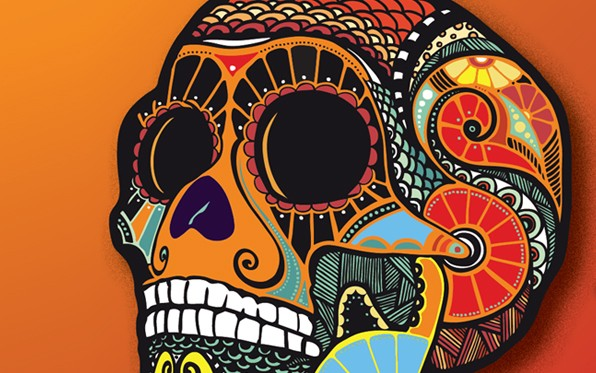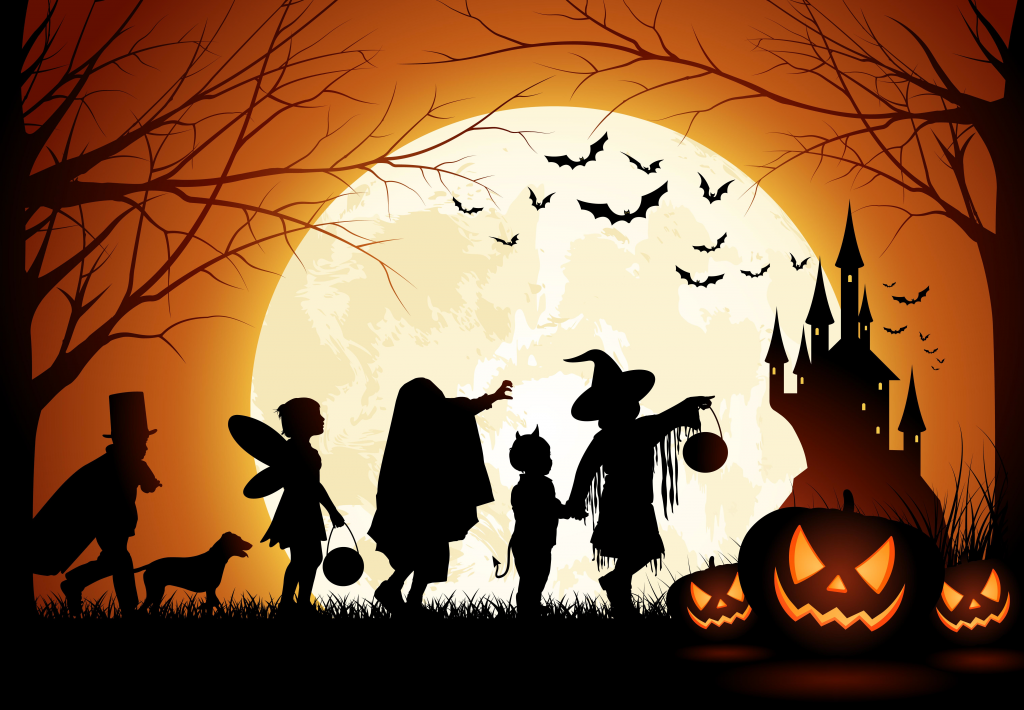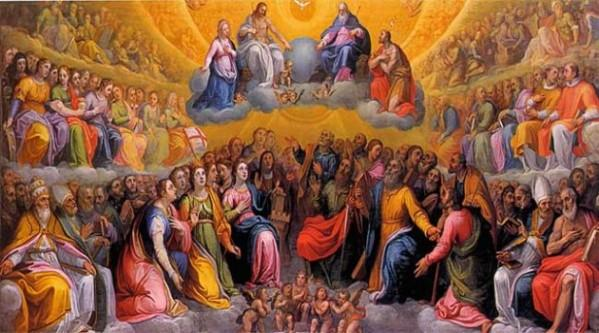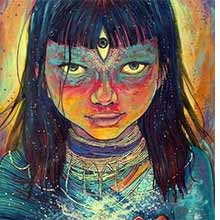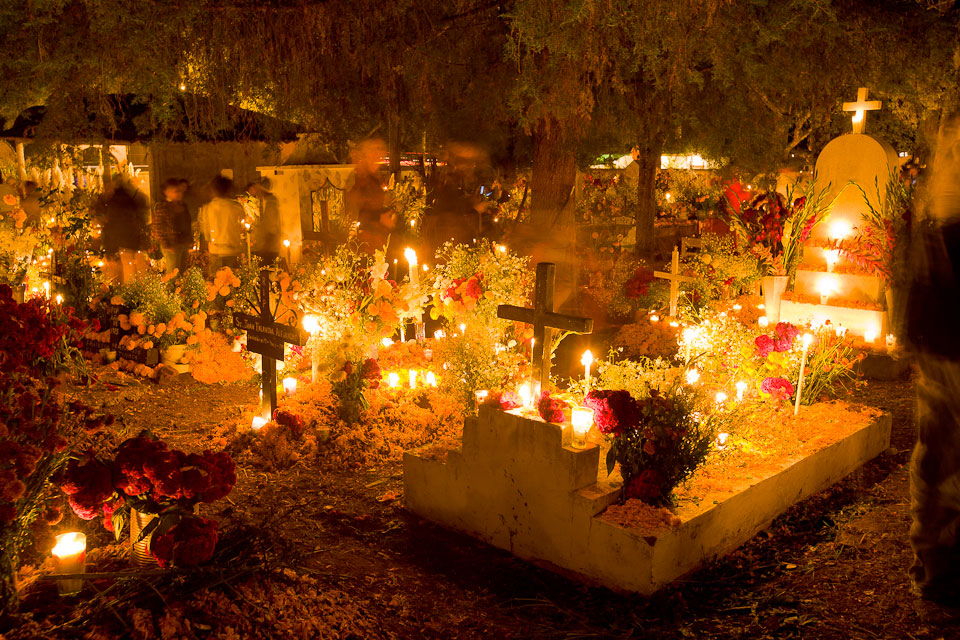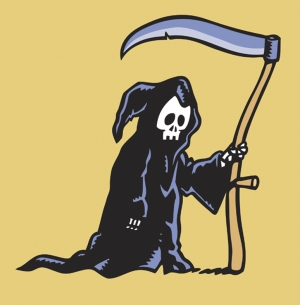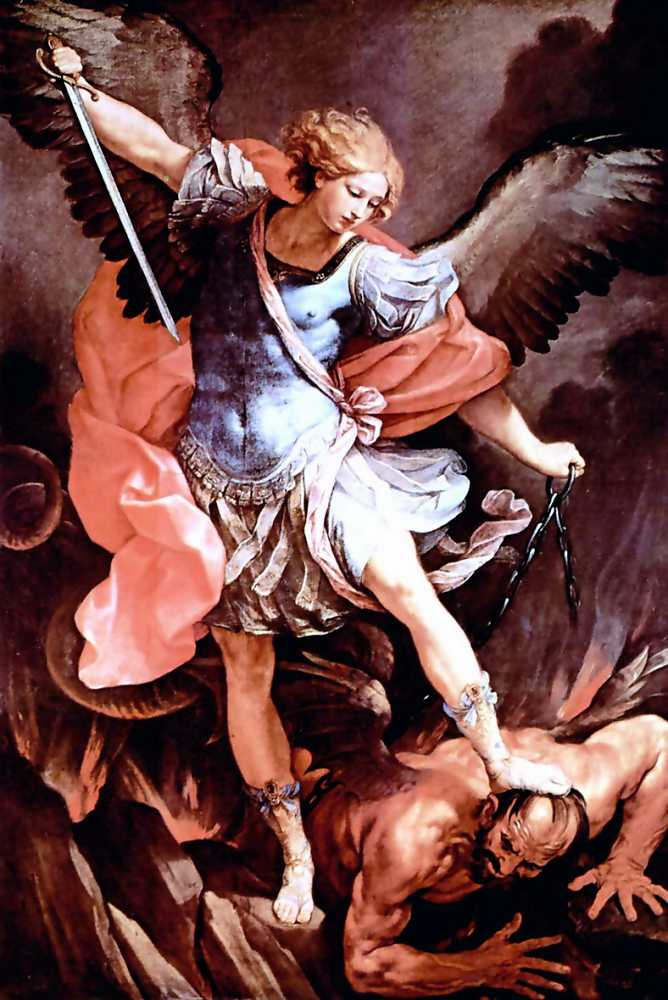This weekend it was Halloween & All Saints ! And today, november 2, it is the day of the dead. These three days were very often confused, yet Halloween, All Saints’ Day and the day of the dead are indeed different.
Quick point on Halloween
In Anglo-Saxon countries , it is at Halloween that spirits of the dead and supernatural forces come out one last time before winter. Large fires were lit that were supposed to fight them, or to exorcise them.
Halloween night is very conducive to divination according to beliefs from across the Channel and across the Atlantic.
Here is my favorite custom:
In England, young girls used to consult a cabbage to find out more about their future husband: the first cabbage they saw in the garden actually represented their future husband . They knew then if it will be fine or big, beautiful or ugly, hunchbacked or “well done” …
Hey yes! In addition to giving birth to babies, cabbages inform us about our future husband!
In the United States , the girls were looking at the surface of a water source hoping to see the image of their future husband.
To learn more about Halloween, I invite you to discover the two following articles: Origins of Halloween, and Halloween traditions.
Quick point on All Saints’ Day
The date of All Saints’ Day is November 1st since 800 . During All Saints’ Day, we celebrate all Saints . In Luxembourg, Germany and France, the 1st of November is a public holiday. That day, most Europeans devote themselves to visiting the graves of their relatives whom they decorate with chrysanthemums. This ritual has also generated confusion between the day of the dead and All Saints.
In Mexico , November 1st is also All Saints Day, Todos los Santos Dia . It is a Christian holiday during which all the Saints and the children of the dead are celebrated.
The day of the Dead, he is not considered a Christian holiday by the Catholic Church in Mexico.
In France , it is said that those who leave the evening of All Saints’ Day may no longer be able to put one foot in front of the other without stepping on the dead, as their ranks are in a hurry.
Anecdotes and superstitions in France
It is said that during the night of All Saints, the world of living communicates with that of the dead …
In Brittany , it is said that on the eve of the Day of the Dead, “there are more souls in each house than grains of sand in the sea and on the shore”.
In the Vosges , it seems that a ball of fire rolls all alone on the night of All Saints’ Day. It would be a soul demanding prayers … Woe to the passer-by who would cross it but who would not understand are silent language! He would be destined for great suffering as well as a blue fear if he did not pray for her at his meeting.
In Franche-Comté , it is said that dogs ‘cries and horses’ gallops were heard, as well as the cursed huntsman’s horn that would be sentenced to wander endlessly through the air.
In Brittany, Normandy and Lauraguais, when the funeral chariot roamed the streets, one could hear the voices of the deceased of the current year . It is said that anyone who sees this apparition would succumb to the field.
On the night of All Saints’ Day , it was customary to ring the bell for souls in pain. On the eve of the dead, we had supper talking about the dead, drinking their health, praying for them. It was customary to satisfy them. They were left with the remains of the meal so that they could restore (curdled milk and pancakes in Brittany) , and a vase of water was placed at the entrance for them drink (in Corsica) . You could also light a candle so that they warm up.
The Britons also used a log called kef ann anaon – log of the dead – to maintain the fire.
In the Vosges, beds were left uncovered and windows were opened , so that the deceased could enter to rest in the house that was once dear to them. Similar customs were found everywhere in Europe. The Italians did not lie down in their beds: they left them unmade to give way to the souls of their parents.
It is said that on All Saints’ Day, it is better not to go on a trip. It is also not recommended to do laundry on All Saints’ Day, or even during the entire month of November (this is considered cleaning your own shroud) . Cleaning and sweeping could “hurt the souls” .
Finally here is the story I prefer …
During a night of Toussaint, on the Norman coast, a storm had risen at sea. A boat was advancing towards the jetty very quickly, too quickly. It is said that her sails were torn, her tackle broken and her mast shaky … This boat looked very much like one of those who had sunk years ago! The witnesses of this show made every effort to moor the boat. A light fog was floating on the waves … Everything became calm and quiet … The spectators gradually became immersed in a thick and cold mist … They approached the pier in order to see more clearly despite the fog, when suddenly they realized that … The ship and the crew were gone!
According to some theologians, the days of the dead would have appeared in Ireland, and then would have reached Italy (around 835), then the Frankish Empire (in the 9th century). This day was very soon frowned upon, as the Church found a striking resemblance between this feast and other pagan ancestor cults.
In the Channel, soul-cakes (cakes of souls) were made: rolls made on the day of the dead, sold as a lucky charm.
It is said that children born at night or the day of the dead will have supernatural gifts …
Anecdotes and superstitions abroad
In Mexico, November 2nd is the day of the dead: Dia de Muertos . Mexicans go to cemeteries to offer food, sweets, liquor, music, and so on to the graves of the dead they want to honor. This custom, however, is not widespread in the whole country, and this festival, as we have read above, is not considered by the Catholic Church and by the Mexicans as Christian.
According to the Anglo-Saxon tradition, the silhouettes of the dead entered the churches on the night of All Saints’ Day, during the twelve strokes of midnight.
In Scotland, it is said that one can ward off fate by putting oneself under a porch on the night of the day of the dead and by throwing one of his clothes to each figure.
In Ireland, locals provided seats and light for the deceased.
In Estonia, they were left with a cake.
In Austria, the candle of souls was left on because its fat was used to relieve burns of souls in purgatory.
In England, bleeding on All Saints’ Day brings bad luck.
In Scotland , the one who hears footsteps behind him must not turn around if he does not succumb: it is death that follows him.
Formerly…
The Greeks were celebrating their dead in the spring, exactly on the third day of the Antisheries.
The Romans celebrated their deaths during parenting, which took place from 13 to 20 February.
The ancient Germans celebrated them in the cycle of Youl (which is Christmas Day today).
The ancient Slavs were celebrating them on the Saturday before Pentecost.
The Celts celebrated them on the night of November 1st (which was the first day of the year).
Sorcellerie
Sorcerers love Toussaint: it is also one of their favorite days to do their hexes! Why ? Because it is said that the Angel Gabriel would raise the foot under which a captive demon is held, for twelve hours, in order to temporarily let him have the power to make them suffer.
Satan overwhelmed by St Archangel Gabriel – Guido Reni
Source : The book of superstitions of Eloïze Mozzani
Mary

